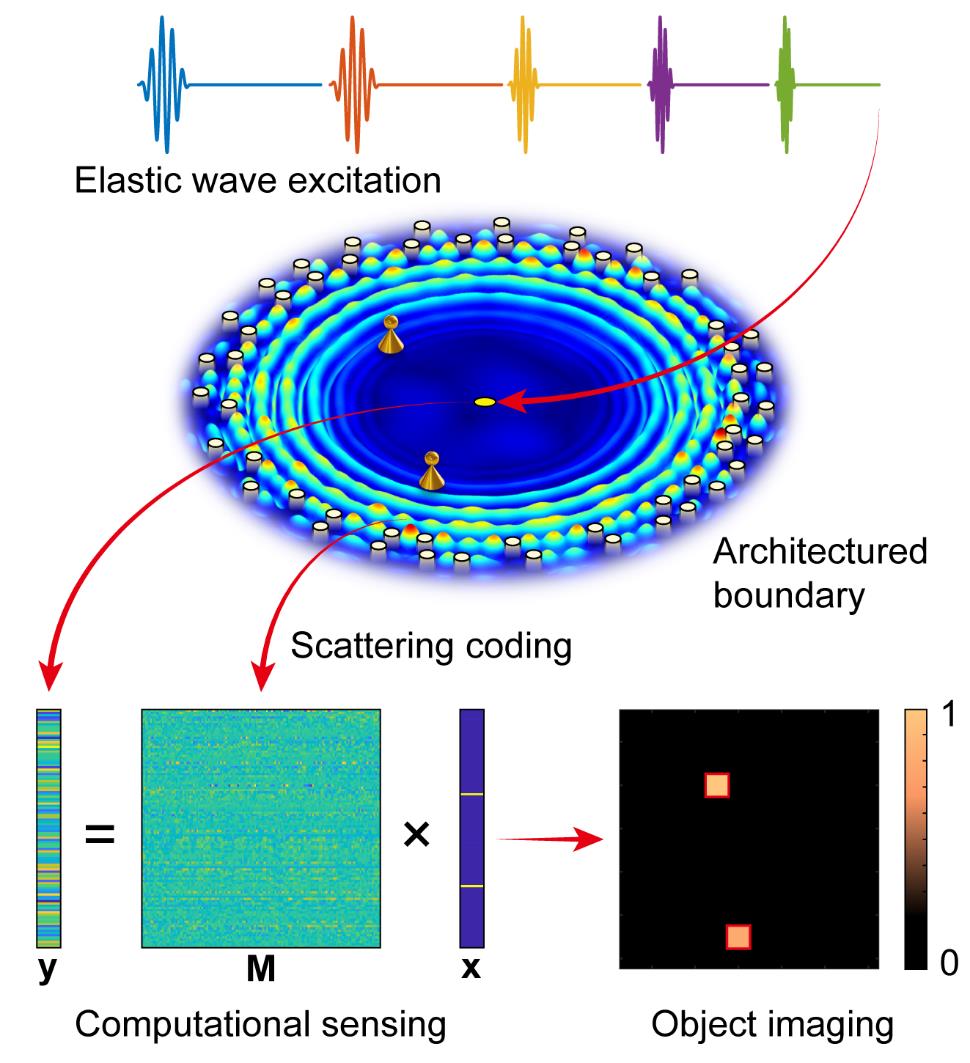
News

News
Recently, Prof. Qingbo He and Prof. Zhike Peng's group published a paper entitled “Scattering-coded architectured boundary for computational sensing of elastic waves” in Cell Reports Physical Science. This paper proposed an approach for computational sensing of elastic waves based on scattering-coded architectured boundary, breaking through the technical problems of object localization with a single transducer. The first author of this work is Dr. Tianxi Jiang and Dr. Xinxin Liao. Prof. Qingbo He is the corresponding author of this work.

Figure 1. Concept of computational sensing with scattering-coded architectured boundary.
The object localization technology based on active acoustic and elastic waves has important application value in fields such as structural health monitoring, medical diagnosis, human-computer interaction. Current technologies typically rely on a large number of transducers with complex hardware systems and high power consumption. Creatures such as bats and dolphins have structured auditory systems that can modulate spatial sound waves to locate sound sources. This feature inspires the design of artificial structures that provide spatially structured features for signals. The wave source information can be recovered by using computational sensing algorithms to solve inverse problems, thereby breaking through the spatial sampling theorem and reducing sensing costs. At present, some progress has been made in the research of vibration and sound source identification with computational sensing, but there is still a research gap in object localization with active elastic waves.
In this paper, a concept of scattering-coded architectured boundary is proposed for computational sensing of Lamb waves (Fig. 1). The architectured boundary is composed of randomly distributed scatterers. A single transducer excites pulse signals with different center frequencies and receives echo signals reflected by objects. The authors demonstrate that the architectured boundary can introduce complex disturbances into scattered field through multiple scattering effect to achieve highly uncorrelated scattering coding of wave fields, thereby eliminating the ambiguity of object information. This property ensures that the locations of objects can be uniquely identified with only a single transducer by using the computational sensing framework.

Figure 2. Demonstration of touchscreen with architectured boundary.
The authors further design a touchscreen prototype with an architectured boundary for interactive input as a demonstration (Fig. 2). The proposed touchscreen prototype does not require any electronic components except a single transducer, which is expected to be integrated with platforms such as home appliances, terminals, robots, mobile devices, and industrial equipment. This work opens avenues for artificially designed boundaries with the capability of information coding and identification and can provide exciting application perspectives in fields such as human-machine interaction and structural health monitoring.
Paper link: https://www.cell.com/cell-reports-physical-science/fulltext/S2666-3864(22)00196-5

Shanghai Jiao Tong University
Address: 800 Dongchuan Road, Shanghai
200240